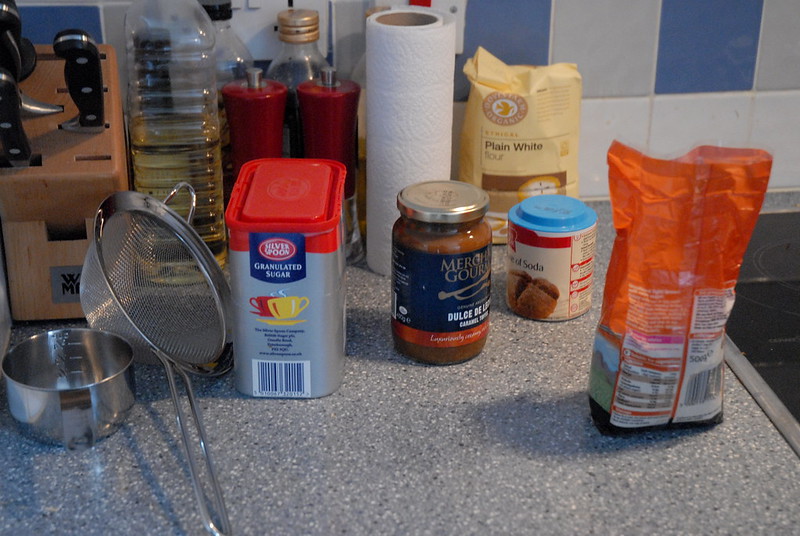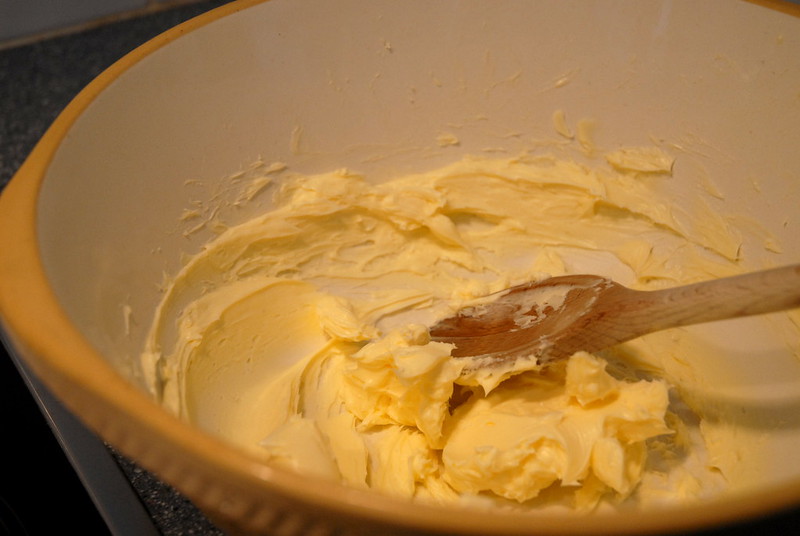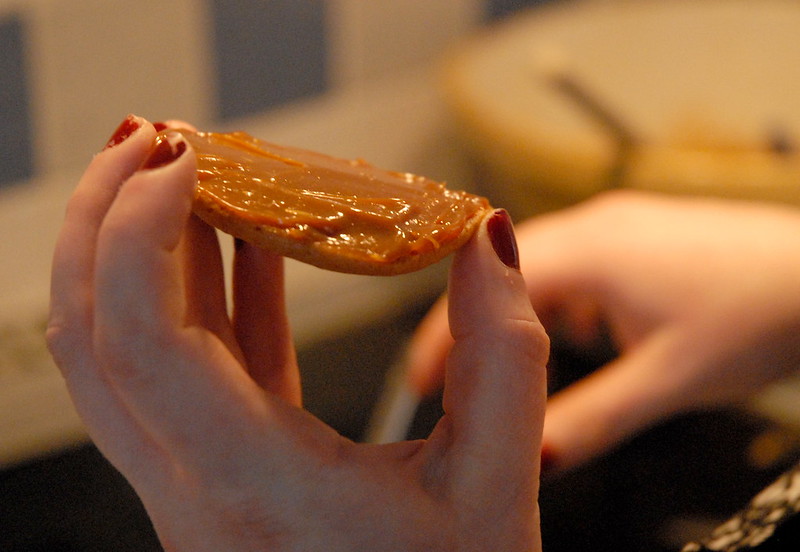The Quest Continues…
In which we are still on a quest for condensed milk
After Thursday’s post, Kahlan got back in touch, with a tip-off. Apparently there had been a rumoured sighting of a can of own-brand non-evil condensed milk, in a Waitrose. So our Saturday was spent driving 25 miles to Harrogate, the nearest branch,* to find … Nestlé products firmly on the shelves. Oh well.
To make up for the disappointment, we bought an ethical jar of dulce de leche instead, and tried to make cookies, from this recipe. They didn’t quite turn out as I expected, being rather flat and soft, but they still taste good, albeit so sweet that I can barely manage to eat a couple at once. Not surprising, given the huge amount of sugar in each one.







A quick redaction of the recipe, the way we did it: take 230g of butter, chop it up, and beat it until it’s soft. Open your jar of dulce de leche and taste some just to make sure it’s not off or something. Beat 3/4 cup of light brown sugar and 1/2 cup of granulated sugar into the butter, then add 3/4 cup of dulce de leche, assuming you can scrape it out of your measuring cup, and beat that in too, until the mixture is light and fluffy. Lick your cups clean, and your fingers, and anything else the stuff has stuck to. Add 2 eggs, mixing them in one by one, before sifting 2 1/2 cups of flour, half a teaspoon of salt and a teaspoon of bicarb into the mixture. Rest the dough for a few minutes before putting teaspoon-sized balls of it onto baking trays lined with greaseproof paper, and bake at 160 degrees for 12-14 minutes. Let the cookies cool for 5 minutes before removing them from the baking tray; then when they are properly cold, carefully pair your cookies up into matching-sized pairs before using the last of the dulce de leche – if you have enough left – to sandwich the pairs together. Yum.
* and the only post code district left in the country that’s free of the Mighty Tesco

 Home
Home